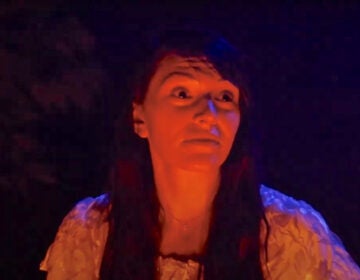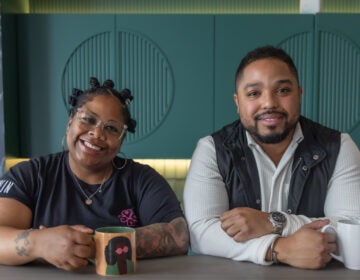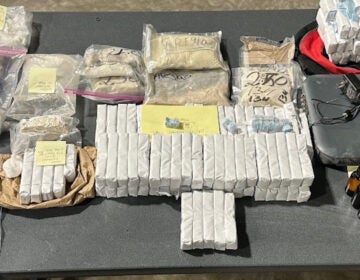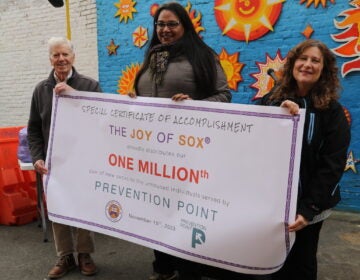Kensington artists, community leaders discuss public art as a tool for social change
A neighborhood initiative to reduce crime invited a panel of artists to explain how art can bring together and empower neighborhoods.
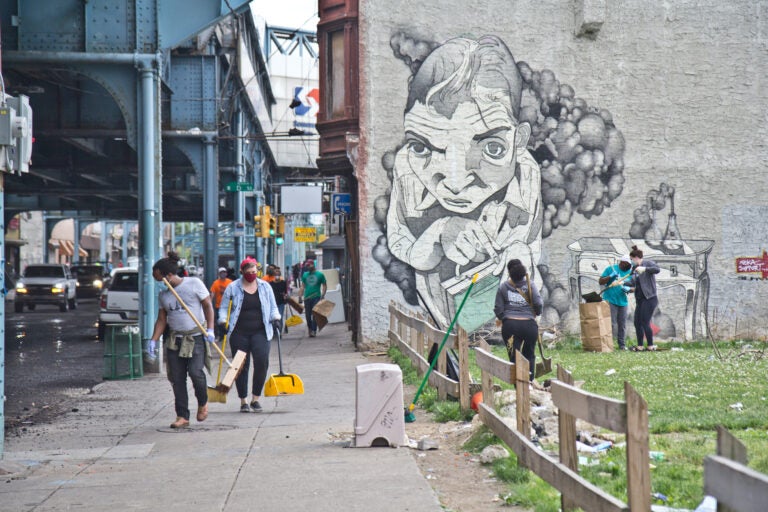
Volunteers with New Kensington CDC clean up in Kensington on June 1, 2020. (Kimberly Paynter/WHYY)
A group of artists associated with Kensington and Fairhill neighborhoods touted the social benefits of public art during a community panel discussion Tuesday night on Zoom.
Two years ago, three community service organizations in the Kensington and Fairhill neighborhoods — the New Kensington CDC, Impact Services Corporation, and the Latino support organization HACE — collectively formed an initiative to reduce crime. It’s called We CAN — or Change and Action Now — and is designed to mobilize neighbors to address community concerns.
During a monthly meeting, a panel of four artists explained how some of those problems — like crime, trash, and problems associated with gentrification — can be approached through public art. Christian Rodriguez — who goes by his graffiti tag TameArtz — said when gentrification brings new people into neighborhoods, rifts can form.
“A lot of individuals don’t have the language to get in regular conversations with newcomers coming into the neighborhood. There’s these invisible walls — language, culture barrier,” said Rodriguez. “With art and a little music, you’re able to connect.”
Rodriguez is the co-founder of Sunflower Philly, a sustainable garden and art space in Kensington. He was joined by muralist Sam Rodriguez (no relation), public artist John Zerbe, and Cassandra Green, who helped found the Mill Creek Community Partnership.
Sam Rodriguez founded Walls for Justice last summer, in response to the widespread protests for racial justice in the wake of the killing of George Floyd. The organization attempts to connect artists with local businesses to collaborate on mural projects.
“I found that no matter where I was working, the power of art was able to shift the narrative, and I painted in some pretty scary places,” he said. “Art has the power to transform someone’s perception.”
Green, who is New Kensington CDC’s community engagement project manager, said she leverages community assets to revitalize neighborhoods, and art is a big part of those assets.
“We don’t need other people to come and lift up you all. We can lift each other,” Green said. “You can have a flyer, you can have an event, but if you don’t have an aura and openness that breaks down barriers and walls so people feel comfortable entering, then we didn’t do anything.”
Zerbe echoed that sentiment, that engaging a community in a collective art project generates agency among neighbors.
“Art is an easy way to create conversations of social change, especially in neighborhoods where [residents] are not getting represented as properly as they should,” he said.

Get daily updates from WHYY News!
WHYY is your source for fact-based, in-depth journalism and information. As a nonprofit organization, we rely on financial support from readers like you. Please give today.



